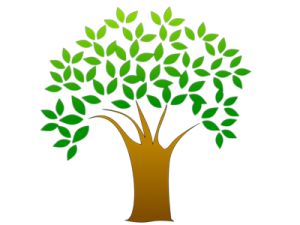“Paper Recycling” is the only sustainable way to full fill our everyday growing needs. Papers making process is totally dependent on Nature’s by products including Trees, waste of farming etc.
Paper recycling pertains to the processes of reprocessing waste paper for reuse. Waste papers are either obtained from paper mill paper scraps, discarded paper materials, and waste paper material discarded after consumer use. Examples of the commonly known papers recycled are old newspapers and magazines.
Paper is one the material that can be easily recycled. Recycled paper is paper that was made from paper and paper products that has already been used and recovered. People need to take their time and save the paper products so that they can be recycled. Paper recycling begins with us. We all need to show our interest in recycling to make it successful.
Process of Paper Recycling:
1. Collection of raw paper
This is the first process in the paper recycling process. Once the paper is collected from the recycle bins it is taken to the recycling plant where the waste paper is sorted and separated into types and grades.
Recyclers and paper merchants collect the paper materials from collection points such as trash bins, paper stores, paper scrap yards, and commercial outlets that generate paper waste. Paper is collected from the bin and deposited in the large recycling container along with the paper from the other recycle bins
Checking of the paper quality is also used to determine whether the type of waste paper is accepted or rejected. There are recyclers that accept mixed grades of recovered paper while some only accept preferred quality of waste paper grades.
2. Sorting/Separation
Once accepted at the recycling facility, the papers are further sorted based on quantity and paper value by assessing the materials that were used to make the paper. In most cases, the papers are classified according to their surface treatment and structure.
For instance, the very thin lightweight paper materials like newspapers are put separately from the thick paper materials like the ones used as paper folders. Sorting is important since paper mills produce different grades of paper materials based on the materials being recovered.
3. Pulping & Shredding
Once sorting is finished, the next step involves shredding followed with pulping. Shredding is done to break down the paper materials into small bits. After the material is finely shredded to bits, it is mixed with water and chemicals to breakdown the paper fiber materials. It turns the paper materials into a slurry substance, a process termed as pulping.
During the process of pulping, a large amount of water is added to the waste paper to produce pulp. Once pulp is produced it is then passed through a series of screens to remove larger pieces of contaminants for e.g.: inks, staples, plastic film and glue. The pulp material is then mixed up with new pulp to help the slurry substance solidify and form a firmer end product. The clean paper pulp is then placed in the machine that uses centrifugal cleaning to spin more of the debris from the paper pulp.
4. Filtering, slug removal and remove Inking
The slurry substance is then taken through a comprehensive filtering process to get rid of all the non-fibrous foreign materials present or any impurities such as strings, tape or glue. The pulp further goes into a chamber where contaminants like plastics and metals staples are removed by use of a centrifuge-like process. Light materials such as plastics float on top while the heavy materials like metals fall to the bottom for elimination.
5. Reuse paper
This is the final stage of paper recycling. The cleaned pulp is blended with new production materials after which, it is put to dry on a flat conveyor belt and heated cylindrical surfaces. As the pulp dries, it is passed through an automated machine that presses out excess water. By the time the pulp is solid, it is passed through steam heated cylinders that facilitates the formation of flattened long rolls of continuous sheets of paper.
The resultant paper sheets are then trimmed, rolled, and sent to various business outlets or manufactures that use paper to make their products. Newspaper printing, wrapping papers, printing papers, and blown-in cellulose insulators are a few examples of areas where recycled papers are used.


Thank you so much for your effort in writing this post.
Thanks!